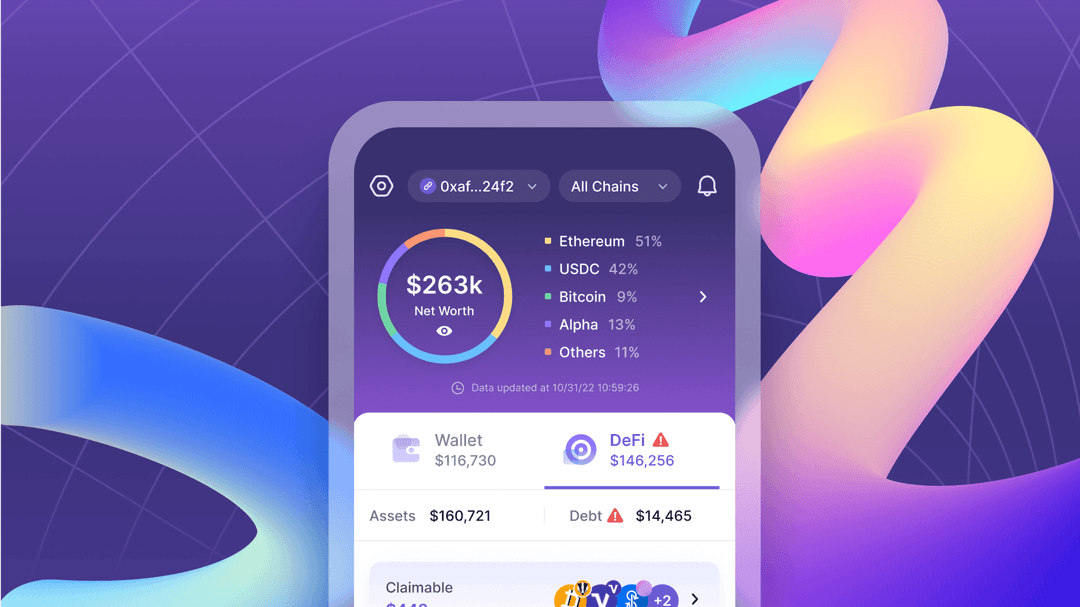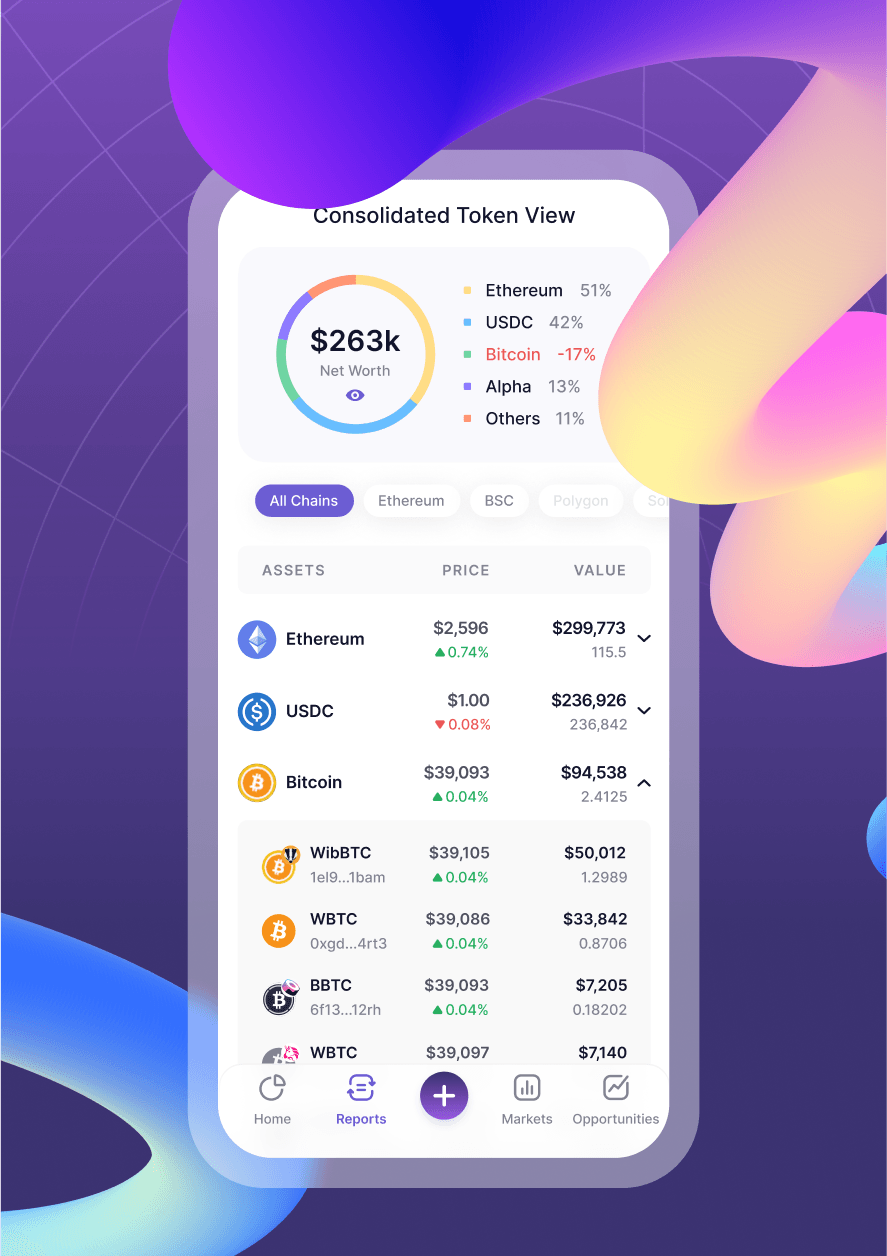
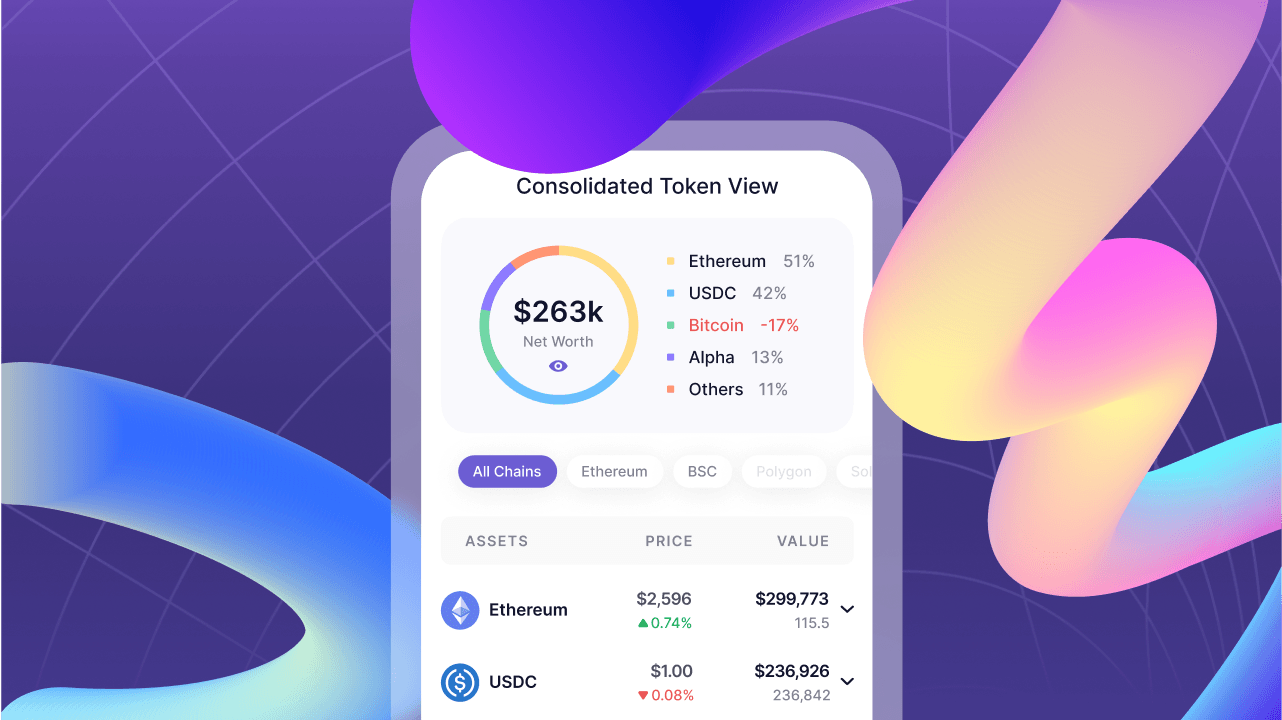
Reactive Programming in Tokenpad (Part 2)
In Part 2, we go beyond the Observer Pattern to make Tokenpad's data truly reactive—building reusable, composable Streams, combining sources with rxdart, and tackling real-world pitfalls so the UI stays accurate in real time.
Introduction
In the last article, we created the PortfoliosSubscriber class, which implements Tokenpad's Consolidated Tokens view using the Observer Pattern. This approach lets us update the application's data once new events are received. A caveat to this approach is that the code depends on the event's argument and piles inside the processEvent block.
In this article, we'll share the approach used in Tokenpad, which uses Reactive Programming to improve the PortfoliosSubscriber class.
Reactive Programming allows us to reuse the required data-transforming logic at different places inside Tokenpad so that the code is not piled inside a single block. This allows us to create our own modified and reusable reactive data sources.
Before sharing the Tokenpad's implementation, it's necessary to understand Reactive Programming operators–the different available types, how they work, and how to combine multiple Stream instances.
Background: Operators in Reactive Programming
Reactive Programming operators enable the manipulation of the data sequence that flows through a Stream in any way the application needs. Its operators are one of the main benefits of using Reactive Programming. Dart, the programming language used to create Flutter applications, includes multiple Stream operators by default and allows the creation of custom operators.
Like Dart's Iterable operators, such as map or where, help in processing collections, viewing a Stream as an asynchronous Iterable can help us understand the Stream's equivalent operators. Following are some examples.
Map
final Stream<int> numbers = Stream.fromIterable([1, 2, 3, 4, 5]);
numbers.map((number) => number * number)
.listen(
(int squaredValues) {
// Here we have access to the squaredValues one at a time:
// 1, then 4, 9, 16 and finally 25
},
);
Stream's map operator allows us to modify each item received in any way we decide.
It will return the same amount of received items, each one modified by the received operation (squared in the example) while maintaining the original order.
Where
final Stream<int> numbers =
Stream.fromIterable([1, 2, 3, 4, 5, 6]);
numbers
.where((number) => number.isEven)
.listen(
(int squaredValues) {
// Here we have access to the even values
// 2, then 4 and finally 6
},
);
Stream's where operator allows us to filter the received items in any way we decide. It will return the same number of received items or fewer. When evaluating the received predicate, the returned elements are those that return true. In this example, the where operator will filter out the odd numbers and keep the even ones.
Stream's map and where operators are the direct equivalent of their Iterable counterparts. The only difference is that Iterable data is fully allocated in memory or is lazily calculated synchronously. Stream data, once again, is asynchronous and thus can be thought of as coming into existence as soon as an event is received carrying the data.
Iterable's map and where operators return a new Iterable instance.
The Stream's equivalents return a new Stream instance as well.
That feature allows Stream operators to be chainable, meaning you can concatenate the result of one operator as the entry for the next operator using a dot notation.
final numbers = Stream.fromIterable([1, 2, 3, 4, 5, 6]);
numbers
.where((number) => number.isEven)
.map((evenNumber) => evenNumber * evenNumber)
.listen(
(int squaredValues) {
// Here we have access to the squaredValues of only original even numbers
// 4, 16 and 36
},
);
In the example, two operators are chained:
- First, odd numbers are filtered from the original
Stream, keeping the even ones (where). - Then, we square the even numbers (
map).
The fact that each operator returns a new Stream makes Reactive Programming very powerful. You can split your calculations into different Stream instances with different operators. Then, with each Stream being the source of some data, you can reuse the streams generated from different upstream calculations for different downstream calculations.
Let me explain what downstream and upstream in this context means.
If we consider Dart Stream instances as a flow of data (similar to a flowing river), upstream is a relative term that means all the operations that happened before a specific operator, and downstream is another relative term that means all the operations that happen after a specific operator.
Before giving you an example, I'll explain the distinct Stream operator. Understanding the three operators involved will help explain both concepts, upstream and downstream.
Distinct
final numbers = Stream.fromIterable([1, 1, 1, 2, 3, 4, 4]);
numbers
.distinct()
.listen(
(int values) {
// Here we only receive in order: 1, 2, 3 and 4
// Without successive repeated elements
},
);
Stream's distinct operator filters out all successive elements that are repeated. In the example, the distinct operator filters the second and third successive 1 and the second successive 4, allowing only the succession 1, 2, 3, and 4.
Let's see this example to understand downstream and upstream:
final numbers = Stream.fromIterable([1, 2, 3, 4, 5, 6, 6, 6]);
numbers
.where((number) => number.isEven) // 1: First operation
.distinct() // 2: Second operation
.map((evenNumber) => evenNumber * evenNumber) // 3: Third operation
.listen(
(int squaredValues) {
// Here we have access to the squaredValues of
// only original and non-contiguously repeated even numbers
},
);
We have four different Stream instances:
numbersStream(The original data source).- The
Streamcreated by thewhereoperator when applied to thenumbersStream. - The
Streamcreated by thedistinctoperator when applied to theStreamcreated bywhere. - The
Streamcreated by themapoperator when applied to theStreamcreated bydistinct.
Relative to the numbers Stream, there are no upstream operators. All the operators are applied downstream.
There are no downstream operators relative to the map, and all the previous Stream instances (created by where and distinct) are considered upstream. In summary, upstream and downstream are always relative in a Stream operator chain.
Keeping this in mind, let's re-implement the Consolidated Tokens screen using Reactive Programming.
class PortfoliosRepository {
String get _currentlyFilteredChain => "Polygon";
/// Assume that here we receive a List of Portfolio
/// whenever there's new data
final Stream<List<Portfolio>> _portfoliosStream =
Stream<List<Portfolio>>.fromIterable(<List<Portfolio>>[]);
Stream<List<Portfolio>> get _filteredPortfolios =>
_portfoliosStream.map((List<Portfolio> portfolios) => portfolios
.where((element) =>
element.chain ==
_currentlyFilteredChain) // 1: Filter Portfolios by selected chain
.toList());
Stream<List<Token>> get filteredTokens => filteredPortfolios
.map((List<Portfolio> portfolios) => portfolios
.map((Portfolio portfolio) => portfolio.tokens)
.toList()) // 2: Extract Tokens from Portfolios
.map(
(List<List<Token>> tokensMatrix) => tokensMatrix
.expand((tokens) => tokens)
.toList(), // 3: Flatten matrix of Token into List of Token
);
Stream<Map<String, List<Token>>> get groupedTokensByCode =>
filteredTokens.map(
(List<Token> filteredTokens) =>
groupBy(filteredTokens), // 4: Group all Tokens by Token code field
);
Stream<List<Token>> get tokensWithAddedValue => groupedTokensByCode.map(
(Map<String, List<Token>> tokensByCode) => calcTotalValueByTokenCode(
tokensByCode
.values), // 5: Add up all the usdValue of the Tokens for each code
);
Stream<List<Token>> get sortedTokensWithAddedValue =>
tokensWithAddedValue.map(
(List<Token> tokens) {
tokens.sort(
(Token a, Token b) => a.usdValue.compareTo(
b.usdValue), // 6: Sort the Tokens by its added usdValue
);
return tokens;
},
);
Stream<List<TokenAndPercentage>> get top4Tokens =>
sortedTokensWithAddedValue.map(
(List<Token> tokens) =>
calculateTop4Tokens(tokens), // 7: Extract top 4 Token
);
// 8: Show the `sortedTokensWithAddedValue` in the screen
// 9: Show the `top4Tokens` in the screen
List<Token> calcTotalValueByTokenCode(Iterable<List<Token>> values) {
/// TODO: Add up all tokens values and return a single representative
/// of the Token with its usdValue field having the calculated addition
}
Map<String, List<Token>> groupBy(List<Token> tokens) {
// TODO: Group all tokens by its code field
}
List<TokenAndPercentage> calculateTop4Tokens(
List<Token> tokensWithAddedValue) {
/// TODO: Calculate the percentage of each token wrt the total
/// and return the top4 and "Other"
}
}
Even though the code looks verbose, it creates the same result as the Observer Pattern example with multiple advantages:
- The code is split into different interconnected
Streaminstances, such as the original source_portfoliosStreamand_filteredPortfolios. - Each
Streamcan be reused as the source for different calculations, like_filteredPortfoliosbeing used to create a newStream(filteredTokens), effectively decoupling the calculations and making them reusable for different purposes.- In the Observer Pattern example, all the calculations had to be done inside the
processEventmethod. - In the Reactive Programming alternative, most
Streaminstances depend on an upstream operation, but every intermediate step can be reused in isolation for new calculations. The data will be kept current as soon as new events arrive with new data from the source (or sources because theStreaminstances will potentially depend on upstream sources). Now, everything is reduced to create a newStreamthat listens (directly or after applying operators) to the original_portfoliosStreamto do the proper calculations.
- In the Observer Pattern example, all the calculations had to be done inside the
Since each step is a different code block, the code tends to be more concise and easier to understand, making it easier to maintain.
There's a trick in the previous example: _currentlyFilteredChain is a static field. Currently, the code will only be filtered by the Polygon chain. It's not fully reactive at the end.
Combine multiple Streams
To fix the non-reactivity in _currentlyFilteredChain, we can turn it into a Stream.
Everything can be a Stream.
Imagine that _currentlyFilteredChain is a Stream<String> instead of a hardcoded String.
Assuming that _currentlyFilteredChain emits a new String whenever the app user changes the current chain filter, we can use both _currentlyFilteredChain and _portfoliosStream to filter the latest portfolios according to the currently selected chain.
Using Marble Diagrams to explain Reactive Programming operators more visually, let's review how the CombineLatest operator works.
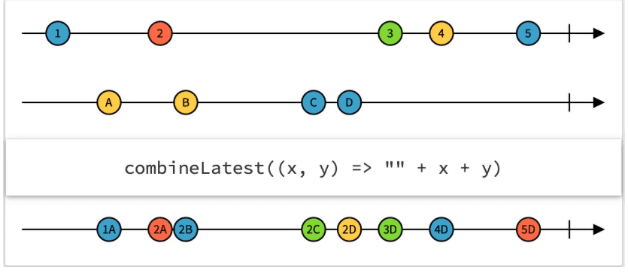
A Marble Diagram visually represents all Stream instances, events, operators, and their results in a single place.
- Each horizontal line represents a
Stream. The arrow shows the time flow from past to future. - Each marble in a
Streamrepresents an event. As theStreamis asynchronous, the marbles located on the left are events emitted before the marbles located on the right. - The content inside each marble represents the event's data.
- The vertical lines at the end of the
Streammark the end of the events for thatStream. - The elevated rectangle is the used operator:
combineLatestis the operator's name in the example.- The arguments for the operator are all the
Streaminstances located above the elevated rectangle. - The lambda expression inside
combineLatestis the operation to be executed by the operator whenever that operator is invoked. It's optional, depending on the operator. In the picture,combineLatestreceives the latest emitted event from eachStreamas arguments and concatenates the received events' data.
- The
Streambelow the operator results from running the operator with the receivedStreamarguments.
Going to the Rx Marbles website lets you discover and experiment with interactive examples of multiple operators, helping you better grasp the concepts and how each operator works.
The combineLatest operator combines the latest event from all the Stream instances used as arguments. The condition for executing the combineLatest's lambda expression is that every Stream argument must have emitted a value at least once; otherwise, combineLatest will not emit any value in the resulting Stream.
Analyzing the Marble Diagram, we have:
- The topmost
Streamemits the value 1 first. - Given that the second
Streamhasn't emitted yet,combineLatest's lambda expression is not executed, and the resultingStreamdoesn't emit a value (it's empty at that time). - As soon as the second
Streamemits the value, A, thecombineLatestlambda expression is immediately executed, concatenating both values. The resultingStreamgets its first emission, 1A, because 1 and A are the latest emitted values from each originalStream. - When the topmost
Streamemits the value 2, thecombineLatest's lambda expression is executed, with the latest emitted values from eachStream, now 2 and A. - This process of concatenating the latest emitted values from both
Streaminstances continues until bothStreamsare completed, signaled by the vertical line at the right end of eachStream.
With combineLatest, we can combine the Stream for the list of Portfolios with the new Stream for the currently selected chain, like this:
class PortfoliosRepository {
/// Assume that here we receive a String whenever there's a new
/// selected chain to filter the data
final Stream<String> _currentlyFilteredChain =
Stream<String>.fromIterable(<String>[]);
/// Assume that here we receive a List of Portfolio
/// whenever there's new data
final Stream<List<Portfolio>> _portfoliosStream =
Stream<List<Portfolio>>.fromIterable(<List<Portfolio>>[]);
Stream<List<Portfolio>> get filteredPortfolios =>
CombineLatestStream.combine2(
_portfoliosStream,
_currentlyFilteredChain,
(List<Portfolio> portfolios, String currentlyFilteredChain) =>
portfolios
.where((element) =>
element.chain ==
currentlyFilteredChain) // 1: Filter Portfolios by selected chain
.toList());
/// The rest of the class remains unmoodified
}
Some important points to notice:
- To use
combineLatestin Dart, we addedrxdartas a dependency. - We can use
combineLatestin multiple ways. In the example, we used theCombineLatestStream.combine2static method. - This example shows one of the advantages of splitting the code into intermediate
Streaminstances. We only had to modifyfilteredPortfolios. All the downstream operators kept working as expected without any modifications.
We combined both _portfoliosStream and the modified _currentlyFilteredChain with combineLatest to have the portfolios filtered by the selected chain reacting to the sources.
Two Common Issues
Although working with Reactive Programming brings multiple benefits, it is not without issues, especially when you first start using it.
Here, I'll detail two common issues that arise when working with Reactive Programming. I'll explain the reason behind the issues and how to solve them. Hopefully, this will save you some troubleshooting time.
Issue 1: Bad State Message
Situation
When you try to listen to one Stream multiple times (either directly, by calling listen in the Stream, or indirectly by using the same Stream instance as the source for multiple other Stream instances), you may see an error like this:
Bad state: Stream has already been listened to.
The error is quite explicit, but it's unclear why it happens.
The reason behind Bad State:
From Dart's official documentation, we see that there are two kinds of Streams:
Single Subscription Streams
Single Subscription Streams emit events that can not be received incompletely, or that need to be fully received and correctly sorted to make sense (for example, reading a file or receiving a web request).
Given that restriction, Single Subscription Streams can be listened to only once; otherwise, partial and unmeaningful data will be received.
By default, Dart's Streams are Single Subscriptions. That's why it throws the error mentioned above when you try to listen to a Dart Stream multiple times.
Broadcast Streams
Broadcast Streams send complete data for each event, and there's no dependency between events. Events from such streams can be listened to at any moment because each event is meaningful on its own.
As stated previously, Dart Streams are Single Subscription Streams by default. However, we can convert a Single Subscription Stream into a Broadcast Stream by using the asBroadcastStream() method in the Stream instance.
Solution
For our ongoing example, using asBroadcastStream() will suit us very well because our Streams emit meaningful events without dependencies from previous or future events. Given that all our Streams depend on two Streams (_currentlyFilteredChain and _portfolioStream), we can transform both to fix the error and listen to the Streams multiple times. This solution is illustrated below.
class PortfoliosRepository {
/// Assume that here we receive a String whenever there's a new
/// selected chain to filter the data
final Stream<String> _currentlyFilteredChain =
Stream<String>.fromIterable(<String>[]).asBroadcastStream();
/// Assume that here we receive a List of Portfolio
/// whenever there's new data
final Stream<List<Portfolio>> _portfoliosStream =
Stream<List<Portfolio>>.fromIterable(<List<Portfolio>>[]).asBroadcastStream();
/// The rest of the class remains unmoodified
}
Important Note:
Always consider whether your Stream can be converted into a Broadcast Stream. Converting a Stream that emits events dependent on other previously emitted events into a Broadcast Stream will fix the Bad State error. However, you may create other issues in the process. One common issue is getting incomplete data because you started listening to a Stream that has already emitted events.
Issue 2: Multiple simultaneous subscriptions to different Streams
Situation
As explained previously, Stream operators usually return a new Stream after it's applied. The key here is the word new. Every time we call map, where, or CombineLatest, the original Stream remains unmodified, and a new Stream instance is returned after applying one of those operators to the original Stream.
In a situation like this:
Stream<List<Token>> get filteredTokens => filteredPortfolios
.map((List<Portfolio> portfolios) => portfolios
.map((Portfolio portfolio) => portfolio.tokens)
.toList()) // 2: Extract Tokens from Portfolios
.map(
(List<List<Token>> tokensMatrix) => tokensMatrix
.expand((tokens) => tokens)
.toList(), // 3: Flatten matrix of Token into List of Token
);
The filteredTokens getter can be called multiple times, and each caller will get a different Stream instance. If we want those generated Stream to possibly emit different values between instances, it's understandable and desirable to have different Stream instances. However, if we want multiple Stream instances to emit the same data, we have two different and problematic situations:
- We're wasting memory and CPU resources by creating multiple
Streaminstances that will always emit the same data. - If we use variable arguments to create the source
Stream(on a method call, for example), we will eventually reach a situation where the resultingStreamsare created from different sources. In that case, eachStreamwill emit different data (depending on the received argument), obtaining unexpected and unreliable results in the application.
The first situation is easy to visualize without further explanation. However, let's adjust the current code to better visualize situation number 2.
So far, we have this implementation for filteredPortfolios:
Stream<List<Portfolio>> get filteredPortfolios =>
CombineLatestStream.combine2(
_portfoliosStream,
_currentlyFilteredChain,
(List<Portfolio> portfolios, String currentlyFilteredChain) =>
portfolios
.where((element) =>
element.chain ==
currentlyFilteredChain) // 1: Filter Portfolios by selected chain
.toList());
It's not a very realistic implementation because we're listening to all Portfolios and filtering with code we wrote. It's a best practice to avoid such filtering in code and delegate it to a data source component (usually a database engine).
However, notice that in this modified example below, filteredTokens is no longer a getter.
Stream<List<Token>> filteredTokens(String chain) => filteredPortfolios(chain)
.map((List<Portfolio> portfolios) => portfolios
.map((Portfolio portfolio) => portfolio.tokens)
.toList()) // 2: Extract Tokens from Portfolios
.map(
(List<List<Token>> tokensMatrix) => tokensMatrix
.expand((tokens) => tokens)
.toList(), // 3: Flatten matrix of Token into List of Token
);
filteredTokens receives a chain as an argument and passes it into an imaginary filteredPortfolios method that's in charge of directly querying the data source. filteredTokens then returns a Stream that emits the Portfolios filtered by the received chain whenever Portfolio data changes. Notice that filteredTokens returns a new Stream instance every time it's called.
The reason behind Multiple simultaneous subscriptions to different Streams:
If we call filteredTokens whenever the user changes the chain filter on the Consolidated Tokens screen, we are going to create and keep in memory multiple Stream instances (one for each selected filter) that will emit different data (each Stream will be filtered by a different chain) at different times. There's no guarantee that different Stream instances will emit in a specific order. This situation will, eventually, show data filtered by a chain that's not currently selected.
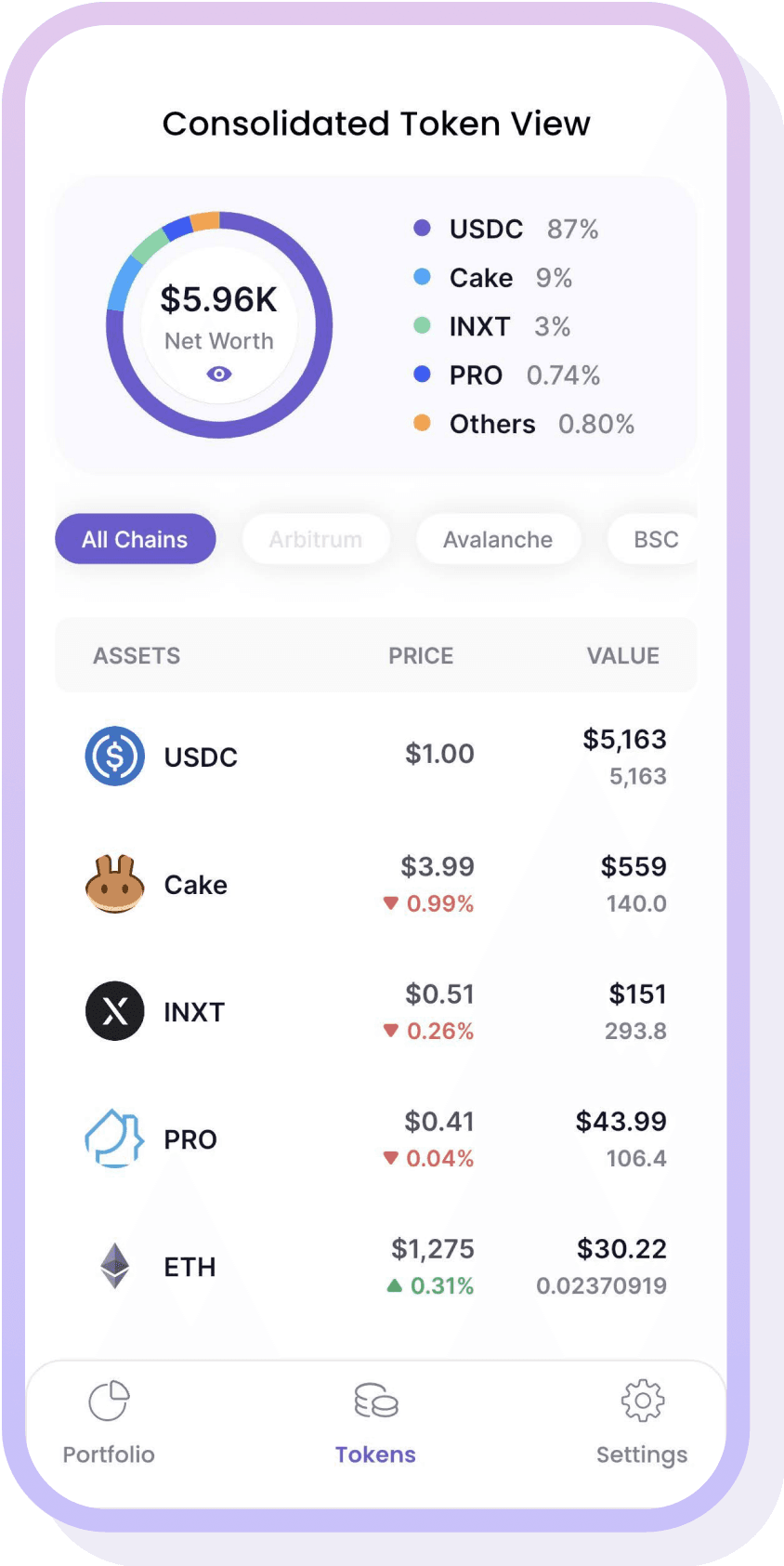
Here is a step-by-step description of the problem with the user experience included:
| Step | User experience | Code |
|---|---|---|
| 1 | The user opens the Consolidated Tokens screen. | A Stream is created by default with the "All chains" filter by default. |
| 2 | The user selects the "Avalanche" chain filter. | A new Stream is created that will filter the tokens using the "Avalanche" chain. Notice there's no place to dispose of the initial "All chains" Stream in the current code. It keeps running and emits events whenever its data changes. |
| 3 | The user swipes to refresh the info shown on the screen. | Tokenpad starts retrieving current information from the server and updates data in the local data source. Since we use Reactive Programming, whenever the local data source changes Portfolios, all active Stream instances will receive events with the most recent data. Still, there's no guarantee that each active Stream will receive the most recent data in a specific order. |
| 4 | The current example shows two active Stream for the Consolidated Tokens screen. |
Eventually, the "All chains" Stream will receive data after the "Avalanche" filtered Stream. This means that the token list will show "All chains" data while the user expects to see the data filtered by "Avalanche," the latest chain the user selected to filter the data. |
Initially, the described situation may appear irrelevant and might even remain unnoticed for a long time. In Tokenpad, it was caught a couple of days after being initially implemented during internal testing. Given that Stream instances allow data to be decoupled and original data sources to be reused in multiple places, this issue will eventually arise, and be present in multiple screens simultaneously, exhibiting a random-like pattern.
This Stream issue can present a highly hazardous situation for an app used for decision-making, especially in the financial space.
Solution
Let's split the problem into two situations: multiple Stream instances that emit the same data and multiple Stream instances that emit different data.
Situation 1: Streams that emit the same data
To resolve this situation, we need to introduce a new component.
StreamController
So far, we have been able to listen to Stream instances, but we have no control over them.
A StreamController is a wrapper over a Stream that directly controls the Stream and allows a programmer to add events to be emitted by the Stream on demand.
A StreamController has two different fields:
stream, the same object we have been using in this articlesink, a new concept that will allow us to manually send events into theStreamController'sstreamfield, thus notifying all its subscribers.
Let's see a possible implementation for _currentlyFilteredChain without the original assumptions, using a StreamController.
class PortfoliosRepository2 {
final StreamController<String> _currentlyFilteredChainSC =
StreamController<String>();
Stream<String> get _currentlyFilteredChain =>
_currentlyFilteredChainSC.stream;
set currentlyFilteredChain(String newChain) {
_currentlyFilteredChainSC.sink.add(newChain);
}
/// The rest of the class remains unmoodified
}
First, we create the new StreamController instance, _currentlyFilteredChainSC. This new tool will allow us to have finely-grained control over our data filtered by chain.
We keep the _currentlyFilteredChain field and set its value as _currentlyFilteredChainSC.stream, maintaining the original signature (Stream<String>) preventing additional changes in the existing code. Given that we're always returning _currentlyFilteredChainSC.stream in the _currentlyFilteredChain getter, we're ensuring that the same instance is always returned, meaning, we're not creating and returning different instances whenever _currentlyFilteredChain is called.
Then, we add a new setter, currentlyFilteredChain, to it. With that, we receive a new chain and send it through _currentlyFilteredChainSC.sink to notify all the subscribers about the last chain selected to filter the data.
Note: If you need a broadcast Stream from a StreamController, you can use StreamController.broadcast.
StreamController can be our ally in preventing the creation of multiple Stream instances that always emit the same values.
We can have a default template for this implementation like this:
class DummyStreamControllerExample {
/// StreamController creation
final StreamController<String> _exampleStreamController =
StreamController<String>.broadcast();
/// Expose stream from StreamController
Stream<String> get exposedStream => _exampleStreamController.stream;
DummyStreamControllerExample(Stream<String> originalDataSource) {
/// Listen to the source once and pipe the events
/// into the StreamController sink
originalDataSource.listen((String newData) {
_exampleStreamController.sink.add(newData);
});
}
}
The structure is simple:
- We create a single
StreamControllerinstance. - We expose our
StreamController'sstreamfield. - We pipe the data coming from a source
Streaminstance into ourStreamController'ssinkfield. The trick is to listen to the originalStreamonly once, thus ensuring that a singleStreamdata source instance is created for the whole process.
For Tokenpad, this is an optimal solution because:
- Most
Streaminstances are kept open during the whole application lifecycle because we need to share data and keep values current across multiple screens. Having to create a lot ofStreaminstances every time the user navigates the application would mean unneeded recalculations and a bad/slow user experience. - Given that we only expose
StreamController.streamand it's the same instance no matter how often we call thegetter, we avoid having multipleStreaminstances emitting the same data. Thus, we avoid wasting resources and ensure listeners receive the same events.
Note: If you're wondering how this solution can prevent unnecessary recalculations, given that when you navigate into a screen and there are no new events in long-life Stream instances, the screen will remain empty. First, congratulations on noting that! That means that you have a solid understanding of Streams so far. To prevent recalculations and empty screens in Tokenpad, we use BehaviorSubject from the rxdart package. It's a custom StreamController that caches the last emitted value and emits it (again) on every new subscription.
Situation 2: Streams that emit different data
There are two ways to solve this problem:
- Cancel a previous subscription whenever a new subscription is created to
Streaminstances created by the same method call from the consumer side. - Cancel a previous subscription whenever a new subscription is created to
Streaminstances created by the same method call from the publisher side.
Option 1 is prone to errors, omissions, and, possibly, an ever-growing complexity around the project because you have to keep track of the subscriptions and be extra careful to cancel the previous ones before creating a new subscription.
In Tokenpad, given that we control the parameterized data sources (such as the filters), we can use takeUntil and skip operators to accomplish option 2 and take care of the subscriptions from the publisher side.
class DummyStreamControllerExample {
final StreamController<String> _currentlyFilteredChainStreamController =
StreamController<String>();
Stream<String> get _currentlyFilteredChain =>
_currentlyFilteredChainStreamController.stream;
set currentlyFilteredChain(String newChain) {
_currentlyFilteredChainStreamController.sink.add(newChain);
}
Stream<List<Token>> filteredTokens(String chain) => _currentlyFilteredChain
.flatMap(filteredPortfolios(chain)
.takeUntil(_currentlyFilteredChain
.skip(1)
/// Cancels previous subscription as soon as _currentlyFilteredChain
/// emits a new value. We use skip(1) to allow the first emission
/// to be received, otherwise no event would be allowed to pass.
)
)
.map((List<Portfolio> portfolios) => portfolios
.map((Portfolio portfolio) => portfolio.tokens)
.toList()) // 3: Extract Tokens from Portfolios
.map(
(List<List<Token>> tokensMatrix) => tokensMatrix
.expand((tokens) => tokens)
.toList(),
// 4: Flatten matrix of Token into List of Token
);
}
Here, we listen for each selected chain to filter and create a new Stream that will emit whenever new data is received from the data source. Multiple Stream instances will be kept open if the user changes the filtering. Note that this is the situation we described previously.
By using takeUntil, we ensure that the Stream parameterized by a chain will only emit until _currentlyFilteredChain emits a new value and the subscription from the previous filter is automatically disposed of.
We have to add skip(1) because we're using _currentlyFilteredChain both as the source for filteredTokens and as the marker to make it stop emitting values. When we add skip(1), we will ignore the first _currentlyFilteredChain emission for each new filteredPortfolios(chain) to prevent _currentlyFilteredChain from being disposed of without ever emitting.
Conclusion
Reactive Programming is a powerful tool, particularly for developing client-facing applications. Its approach to data handling offers several benefits that can significantly enhance both the user and developer experience.
For developers, the advantages include time savings due to more manageable and maintainable codebases, the ability to implement more precise and dynamic logic, and easier error handling.
Reactive Programming allows developers to create more responsive and scalable applications, potentially improving overall performance.
Consider the implementation of the example logic in the previous section without the aid of Reactive Programming. Such a scenario could lead to a considerable increase in code complexity and a sizable increase in your codebase. This complexity is evident in patterns like the Observer Pattern, which traditionally has relied on a considerable amount of code to be nested within a single block to handle events, where the entire application's logic might depend on those events.
Despite these benefits, there may be reasons why developers hesitate to adopt Reactive Programming. The initial learning curve can be steep, as Reactive Programming involves a shift in mindset from more traditional procedural programming paradigms. Moreover, if not implemented thoughtfully, it could lead to less readable code, especially for those unfamiliar with its principles. There's also the challenge of integrating reactive systems with non-reactive systems during code refactoring. Refactoring the code to support Reactive Programming may involve rethinking a large part of the existing codebase and a developer would face compatibility issues. Anticipating such compatibility challenges may discourage some developers from adopting this approach.
Overall, the choice to use Reactive Programming should be informed by each project's specific needs and constraints while considering the potential hurdles and the learning investment required. The payoff in terms of application performance, code maintainability, and the satisfaction of creating reactive, intuitive user interfaces is often worth the initial effort required to use this programming paradigm.
To learn how to mix Reactive Programming with Flutter (UI), read about the StreamBuilder widget or bloc package.
I hope you enjoyed the article and learned a lot from it.
Thanks for reading!
